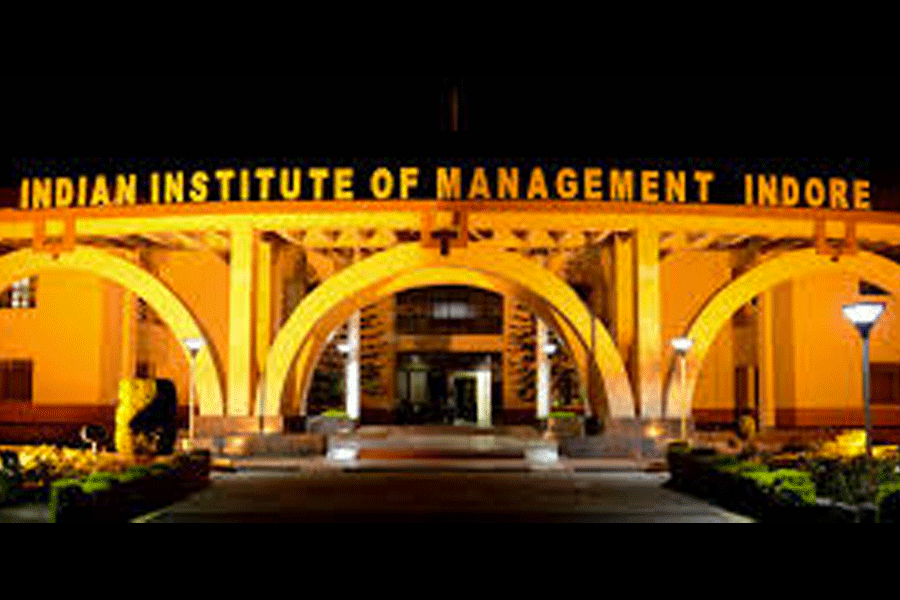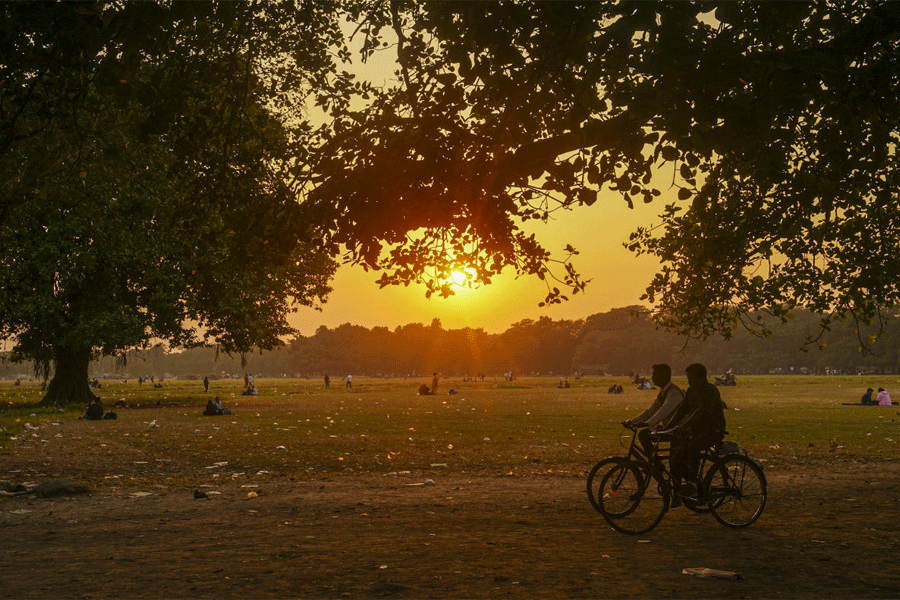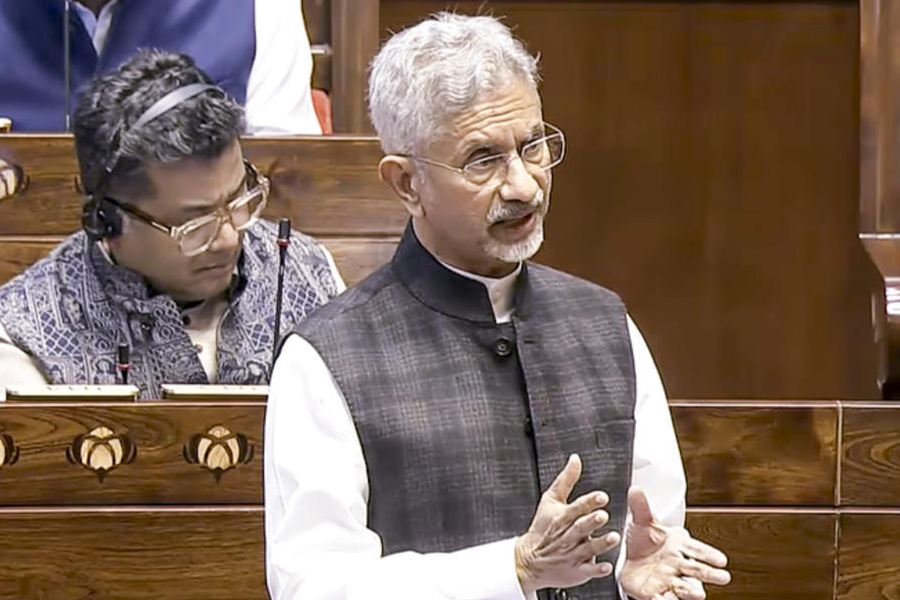|
|
Of the three artists showing their work at Studio 21 (Mindscape, till February 28), Rahul B. Wagh is the most prolific. Hemant Rao and Harish Ojha each present a single body of work, which evolves by variations on a theme, but Wagh uses at least three discernible styles in his untitled series.
There is, first, the influence of Op Art, of the dizzying labyrinths of Bridget Riley, although Wagh’s luminescent greens and blues, chequered or wavy, also recall block prints on indigenous textiles. In the next set of images, he moves towards figurative art, alluding to phallic structures, contorted faces and scattered bits of flesh and bones. However, true to the title of the show, these remain pure mindscapes — moments of fantasy, woven together at whim, then left to the viewers to decode.
This train of thought develops in the final cluster of paintings, perhaps the most complex and technically accomplished of Wagh’s works. In these, he modulates intense patches of colour — burnt sienna, electric blue or lurid crimson — deftly, leaving murky imprints (as if on glass) of reclining bodies, wings and broken bones. These obscure shapes play strange tricks on the eye — their meaning come into focus one moment, only to dissolve in the next.
Harish Ojha anchors himself firmly in “Folk Culture”. There is a clear return to tradition, as deities, printed textile, flora and fauna come crowding back into the frame. Despite the teeming references to myths, these images are not cluttered. On the contrary, their most arresting feature is Ojha’s use of the blank surface of the paper — often daubed with a dim shade of grey. These empty spaces are trailed by dots, like footprints tracing a path across a mysterious map.
For a self-taught artist, Hemant Rao seems to be the most poised of the three participants. He comes closest to reflecting the ebbs and flows of the subconscious mind. There is a menacing inwardness in Rao’s works that cannot be confined within a simple surrealist design. The dark shadows, intermittently relieved by blinding light, seem more than nightmarish. Looking at the particles suspended in a grey background (the deadly paleness of formaldehyde) one is reminded of cells and tissues, of the innermost fears and secrets coursing through the human body (picture).
This interplay of density and fluidity, the physical and the psychological, is reminiscent of a musical composition, where the major and minor notes coalesce to create harmony out of dissonance. Rao’s work, exuding an anaesthetic stillness, feels more chilling than serene.












